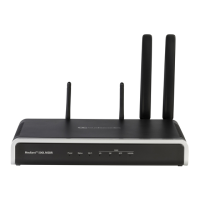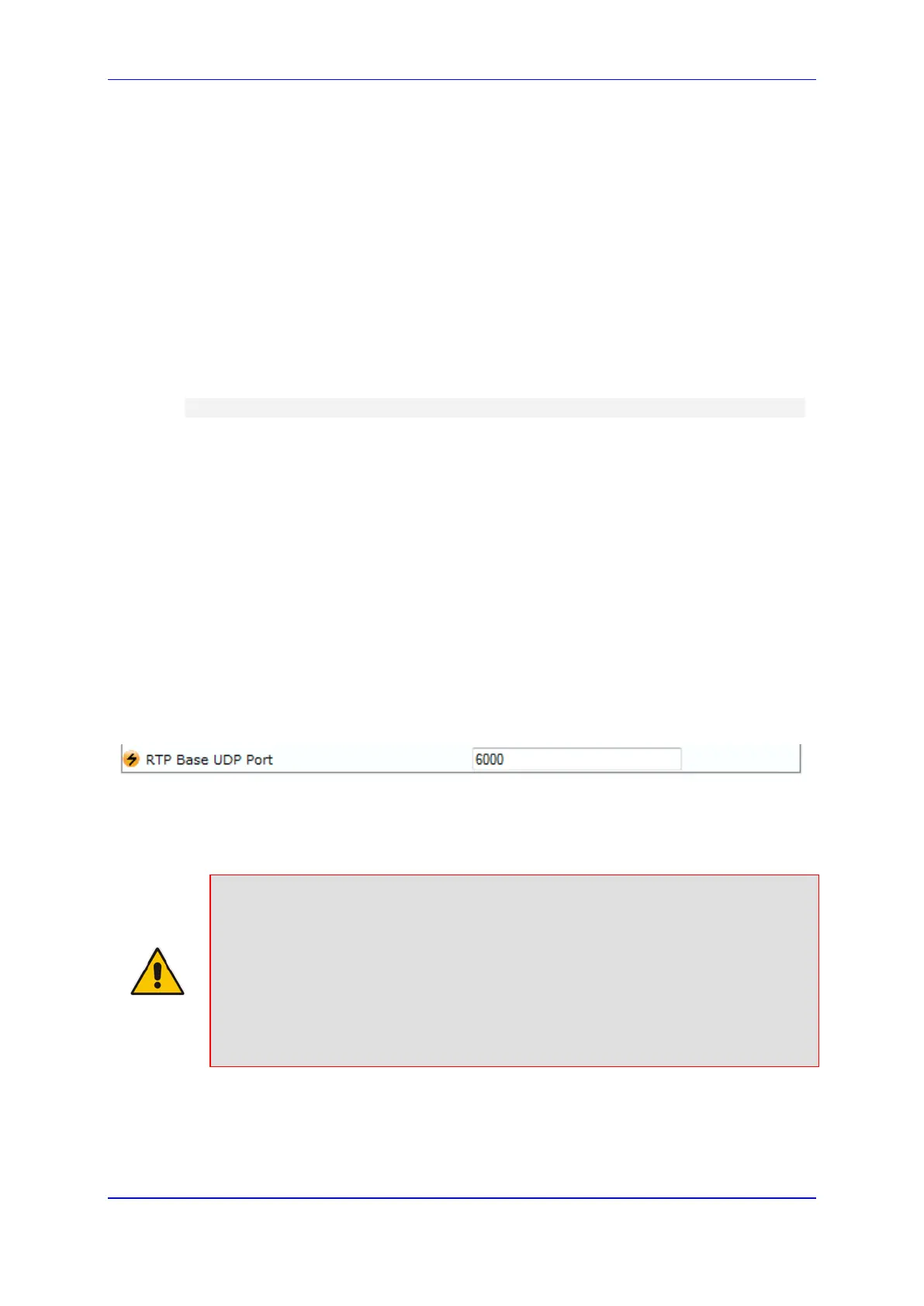User's Manual 17. Media
Version 6.8 199 Mediant 500L MSBR
17.3.4 Configuring RTP Base UDP Port
You can configure the range of local UDP ports for RTP, RTCP, and T.38 media streams.
The range of possible UDP ports that can be used, depending on configuration, is 6,000
through to 65,535. The device assigns ports randomly to the traffic within the configured
port range.
For RTCP and T.38 traffic, the port offset from the RTP port used for the voice session is
one and two, respectively. For example, if the voice session uses RTP port 6000, the
RTCP port and T.38 port for the session is 6001 and 6002, respectively. However, you can
configure the device to use the same port for RTP and T.38 packets, by setting the
T38UseRTPPort parameter to 1.
Within the port range, the device allocates the UDP ports in "jumps" (spacing) of 10
(default). For example, if the port range starts at 6000 and the UDP port spacing is 10, the
available ports include 6000, 6010, 6020, 6030, and so on.
The port range is calculated using the following equation:
BaseUDPPort to 65,535
Where, BaseUDPPort is a parameter for configuring the lower boundary of the port range
(default is 6000).
For example, if the base UDP port is set to 6000, the port range is 6000 to 65,535.
You can also configure specific port ranges for specific SIP entities, using Media Realms
(see Configuring Media Realms on page 275). You can configure each Media Realm with a
different UDP port range and then associate the Media Realm with a specific IP Group, for
example. However, the port range of the Media Realm must be within the range configured
by the BaseUDPPort parameter.
The following procedure describes how to configure the RTP base UDP port in the Web
interface.
To configure the RTP base UDP port:
1. Open the RTP/RTCP Settings page (Configuration tab > VoIP menu > Media >
RTP/RTCP Settings). The relevant parameter is listed under the 'General Settings'
group, as shown below:
Figure 17-6: RTP Based UDP Port in RTP/RTCP Settings Page
2. Set the 'RTP Base UDP Port' parameter to the required value.
3. Click Submit.
4. Reset the device for the settings to take effect.
Note:
• The RTP port must be different from ports configured for SIP signaling traffic (i.e.,
ports configured for SIP Interfaces). For example, if the RTP port range is 6000 to
6999, the SIP port can either be less than 6000 or greater than 6999.
• The base UDP port number (BaseUDPPort parameter) must be greater than the
highest UDP port configured for a SIP Interface (see Configuring SIP Interfaces on
page 283). For example, if your highest configured UDP port for a SIP Interface is
6060, you must configure the BaseUDPPort parameter to any value greater than
6060.

